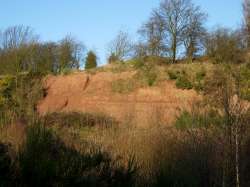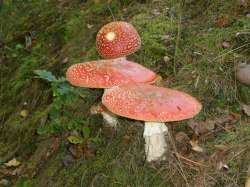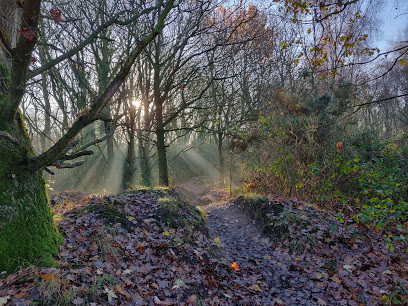Anyone who hated mowing the lawn will love the wildflower meadow at Shire Oak Park. It is only cut once a year, which menas that the seeds from plants like the black knapweed and ox-eye daisy have the chance to set their seeds. When the meadow is in bloom, it teems with sun-worshipping insects like butterflies and bees!
By clearing the young birch trees from the area and re-introducing a lowland heath habitat of heather and golden flowering gorse, rare butterflies and ground-nesting birds have been encouraged back to the site.
The pool is home to plenty of fish, frogs, toads and dragonflies and as a result coots and moorhens choose to nest here, attracted by this bountiful food supply. During spring and summer, the area also hosts a visitor from 4000 kms away. The willow warbler will nest in the willow trees of Shire Oak until the Autumn, when it will return to central Africa.
Other birds you might be fortunate enough to spot at Shire Oak Park include yellowhammers, linnets and whitethroats. In the autumn you can find a variety of fungi, including the spectacular (but poisonous!) Fly Agaric - which is the typical red toadstool with white spots often depicted in children's books.
Modern Day Mining!
These days, the sand quarry faces at Shire Oak Park are home to a different kind of mining! Those sandy slopes and flowery meadows make Shire Oak Park a Mining Bee's Dream! Mining bees, unlike honey bees or bumble bees, don't live in hives. They live largely solitary lives, gathering pollen from local flowers to provision their nests, which they excavate into the face of the reserve's sandy cliffs and paths. The one thing that they have in common with bumble bees is that they are generally very passive, non-aggressive species that never swarm, and rarely sting unless provoked. They provide a vital service to the environment by pollinating our native flowers.
There are even species of bees (called cuckoo bees) which have evolved to lay their eggs inside the already-provisioned nest of the mining bee. When the egg hatches, it eats the larva of the mining bee and eats the pollen stores. These fascinating and mysterious cuckoo bees can be found at shire oak - although they look more like a pretty wasp than a bee, as they aren't visibly furry, and are brightly coloured.
History
An ancient oak tree once marked the boundary between Walsall Wood and Shenstone. Although the oak tree itself is long gone, the area around where it stood is still known as Shire Oak. Shire Oak gets its name from an ancient oak tree sited on the old Shenstone/Walsall Wood parish boundary. (Shire would probably have come from the Saxon word ‘scyre’ meaning divide). The oak finally came down in the 1890’s. There is a small remnant of it at Shire Oak Community School .
From the 13 th century, Shire Oak was part of the Royal Forest of Cannock, a mixture of arable, pasture woodland and heathland, in which the King's deer were protected. During the 18 th century the area was enclosed into agricultural fields and thus it remained for the next 200 years. Quarrying for sand and gravel started here in the early 1930’s, but during World War II the government took over the area for tank testing. After the war, quarrying continued in earnest to supply materials for rebuilding Birmingham . The quarry finally closed in 1978 although Birch Hollow, at the south end, has not been quarried since the 1940’s. The park was used for farming until the early 1930s when a sand and gravel quarry was opened. Some of the materials from the site were used to rebuild Birmingham after the second world war.




